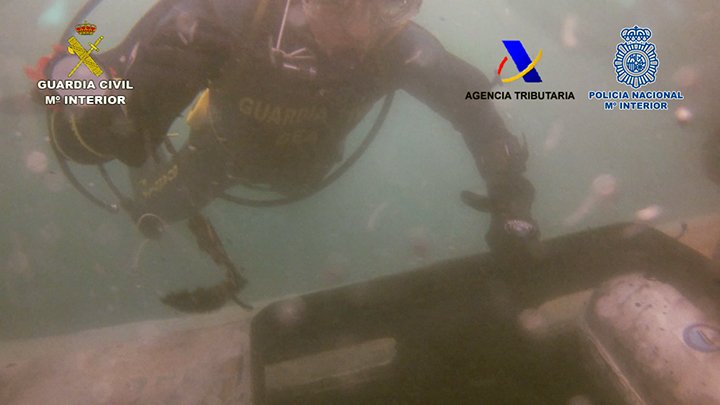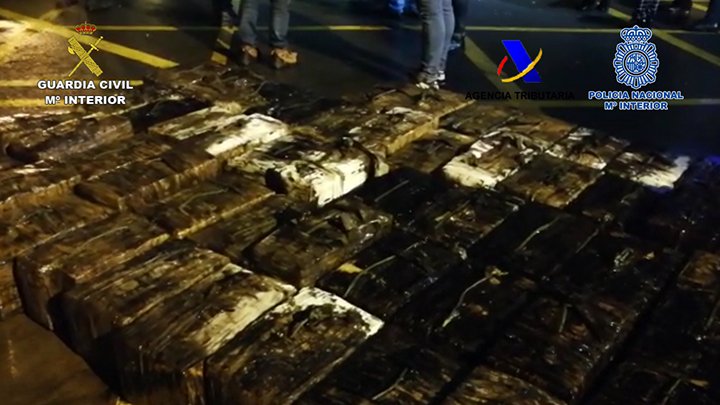Spanish Authorities Seize First Narco-Sub Ever Intercepted in EU
On Tuesday, Spanish authorities refloated a sunken "narco-sub" smuggling vessel and extracted 3.5 tonnes of cocaine from its interior. Though the vessel type is common in the Americas, this example was the first of its kind ever discovered in Europe.
Before the narco-sub approached the port of Aldan, Galicia, an international law enforcement team from the UK, Portugal and Spain had been tracking and preparing to seize it. The vessel sank during the interdiction attempt, and two Ecuadorian nationals were arrested. A third managed to evade capture and escape.
Police divers recovered a package of cocaine from the vessel after the sinking, and authorities mounted a salvage effort to seize the rest. They refloated it on Tuesday using airbags and towed it into the port of Aldan.
Spanish authorities believe that the narco-sub originated in Colombia, thousands of miles away on the other side of the Atlantic. "The submarine had traveled about 7,690 kilometres or 4,778 nautical miles. It stopped off in Cape Verde, then headed on to Portugal. It was about 40 miles off the coast of Portugal and then headed north towards Spain," a Portuguese official told Al Jazeera.
“This huge seizure of cocaine worth hundreds of millions of pounds is a result of intelligence sharing between the NCA, the Spanish authorities and the multi-agency Maritime Analysis and Operations Centre in Lisbon," said Tom Dowdall, deputy director international for the UK National Crime Agency. “It is highly likely a lot of this cocaine would have ended up on the streets of the UK, fuelling serious violence and impacting on the most vulnerable members of society . . . Seizures like this are vital in disrupting and dismantling transnational crime groups trafficking deadly drugs, and ultimately protecting the public from the damage they cause.”
Similar home-grown vessels are routinely intercepted in the busy drug-trafficking lanes of the Eastern Pacific. The U.S. Coast Guard treats the boardings as high-risk evolutions: in addition to the vessels' questionable seaworthiness and flooded weather decks, smuggling crews often open scuttling valves when discovered in order to evade prosecution.


